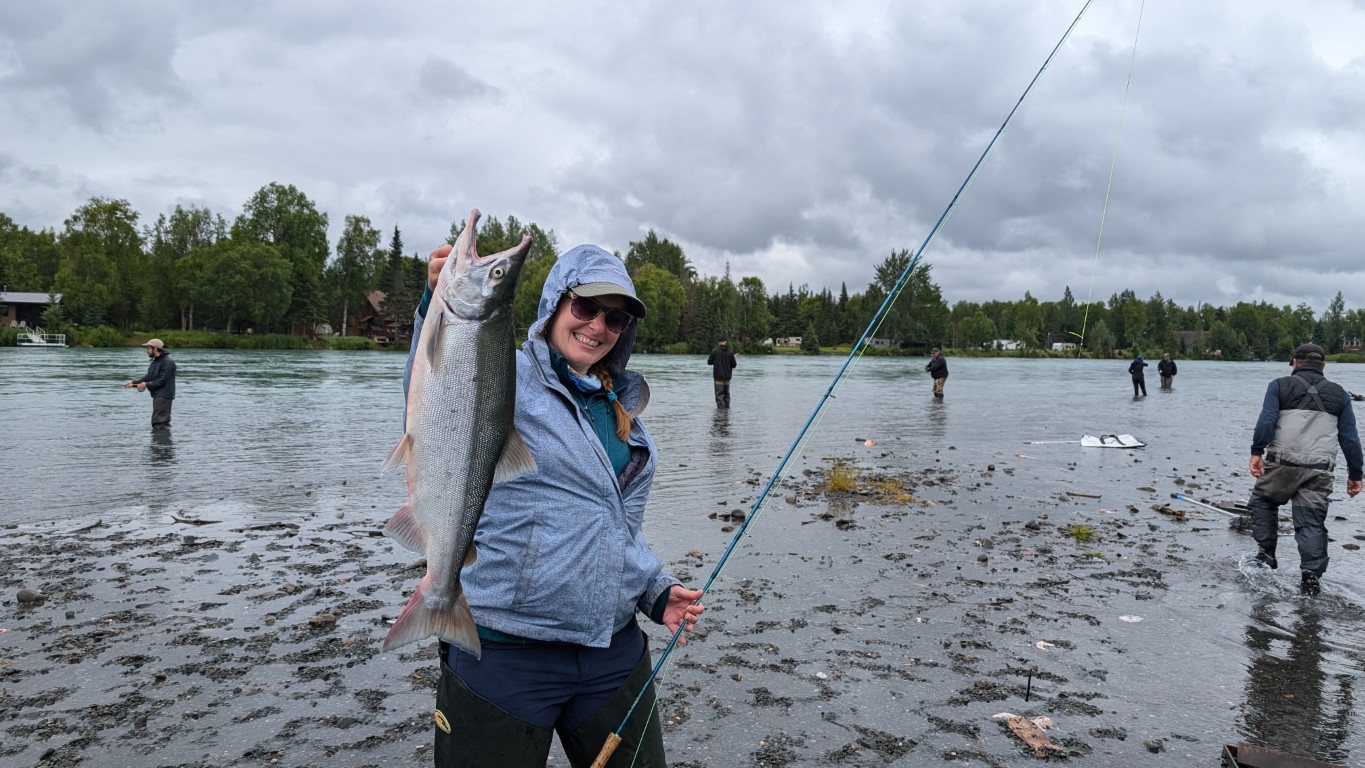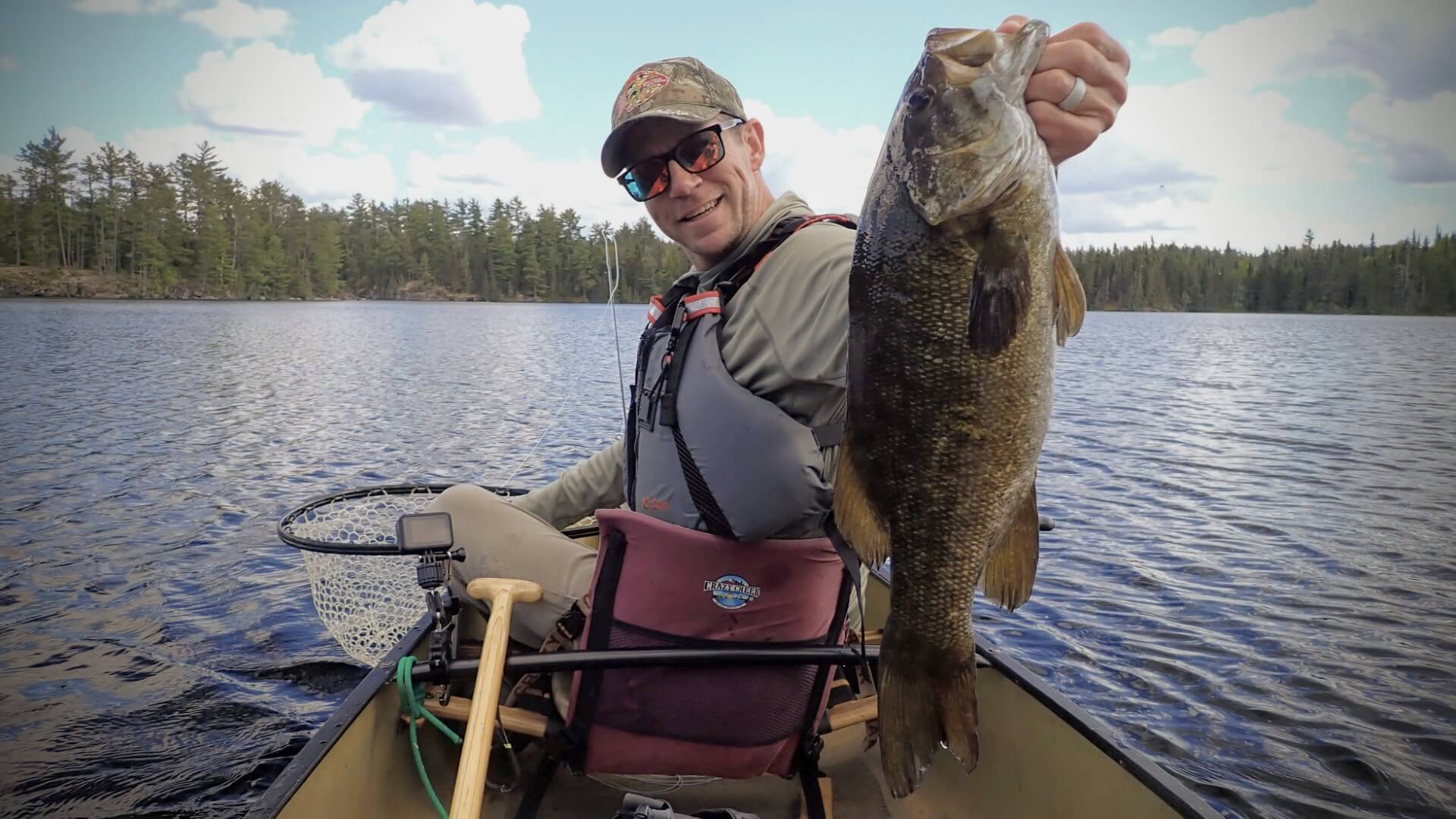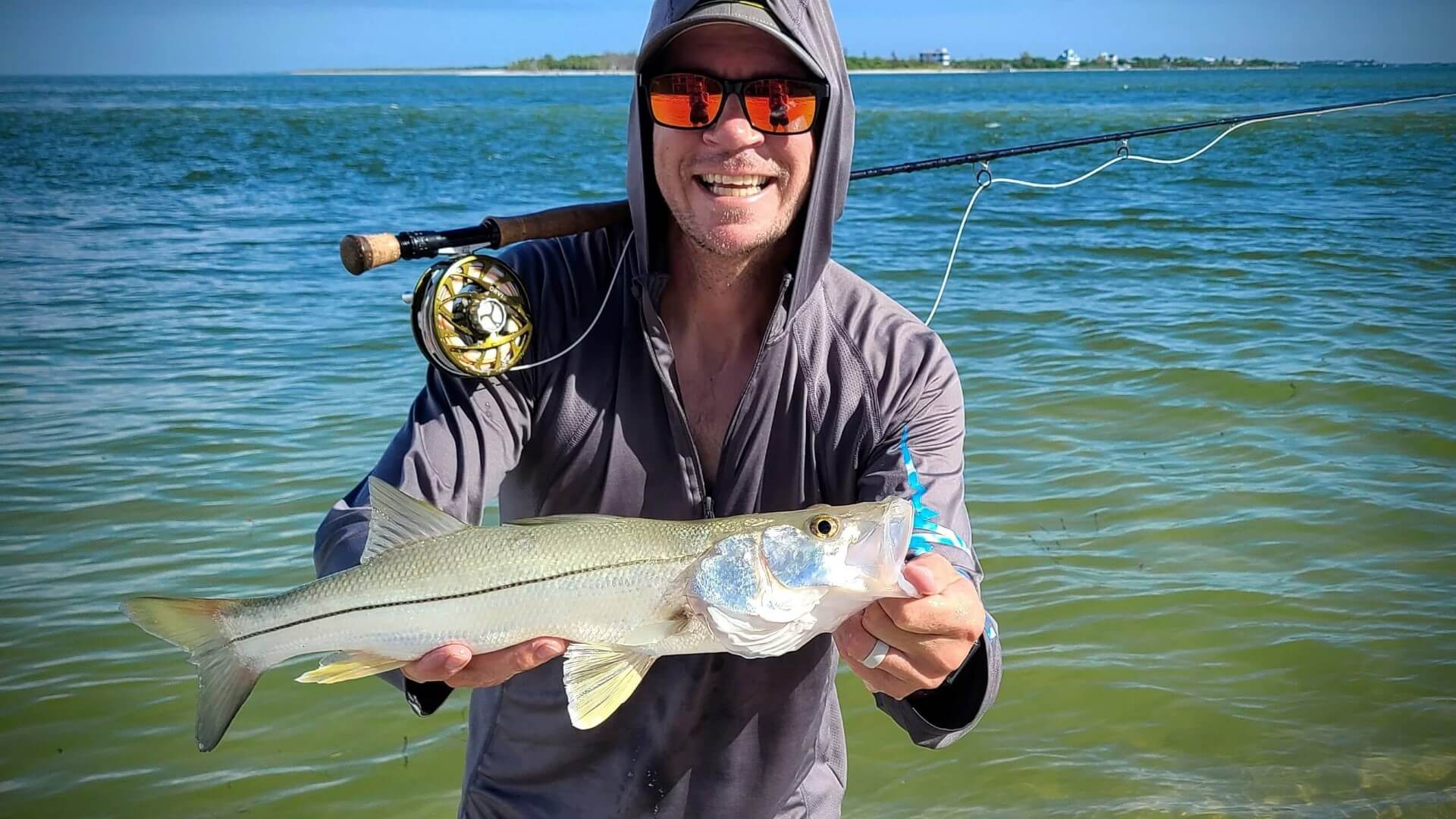Spey Casting Terminology
Learning the Lingo
Before you dive too deeply into the world of spey casting, I think it is important to cover some of the common terminologies to make sure we are all on the same page. One of the most confusing parts of learning how to spey casting and swinging for steelhead and other migratory fish is simply figuring out the lingo.
View All Swinging Related Articles
- Is Spey Casting Right For You?
- Picking Out Spey Casting Gear
- Learn Effective Casts and Swinging Techniques (Coming Soon)
Different forms of two-handed casting are often used interchangeably, and I think that is leading to much more confusion than there needs to be. So just a quick background.
The primary styles of “two-handed casting” include spey casting and skagit casting, but both types of casting are commonly referred to as spey casting. Traditional spey casting is typically done with, you guessed it, a spey rod. These long (13’ and longer) rods usually are paired with a Scandinavian (scandi) style shooting head (also called long-bellied lines) and have a relatively long and slim taper. These “spey” or “touch-and-go” casts are typically performed by making a large d-loop on your backcast and when your line touches the water you make your forward cast. Oof, that’s a lot of fancy new words, I know. If you are still with me then we’ll cover the other style of two-handed casting, skagit casting, or “sustained-anchor” casting. This type of casting is typically performed on a switch rod (10’-12’) paired with a skagit head that is shorter and relatively heavier than a scandi line.
A few commonly used casts include the term “spey” (i.g., single-spey, double-spey), but can (and are often) be used with skagit style shooting heads.
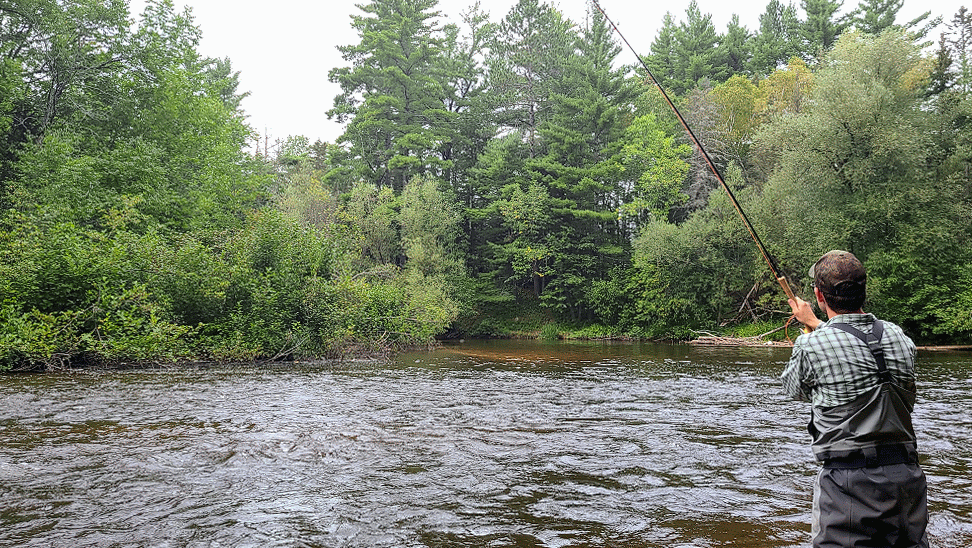
Glossary
I’ve broken down the spey casting terms into four main groups, including gear, casting terms, spey casts, and casting faults.
Gear Terms
Switch Rod - Two-handed rods that are between 10’ and 12’
Spey Rod - Two-handed rods that are 13’ or longer
Spey Reel - Similiar to a standard fly reel, exept generally heavier, have a smaller arbor, have an enclosed cage to keep the running line from escaping, and often feature a click and pawl style drag system.
Click and Pawl - Instead of a drag system, a click and pawl reel has a simple, maintenance-free clicker that offers just enough resistance to keep your line from backlashing.
Two-Hander - (Double-Handed Rod) Another term for a spey or switch rod that has a handle below the reel that is used for spey style casting.
Backing - Fly line backing is a line that extends the total length of line on your fly fishing reel. Usually made from Dacron, backing is typically purchased in 12-lb to 30-lb breaking strength.
Running Line - (Shooting Line) A small diameter running line that is attached behind the body of a shooting head. For example - Rip Slickshooter or Airflo Ridge, or Airflo Miracle Braid.
Shooting Head - The body section of a line including the front taper, the belly and the back or rear taper (Skagit and Scandi are types of shooting heads).
Sink Tip - A non-integrated sink tip is a section, usually 8-12’ long that attaches to your shooting head with a loop to loop connection. Sink tips can be changes when fishing different depths and current speeds.
Polyleader - Built by Airflo. Polyleaders are weighted leaders typically made with a dense sinking core and coated in PVC. Commonly used with scandi lines.
Versileader - Built by Rio. Versileaders are weighted leaders typically made with a dense sinking core and coated in PVC. Commonly used with scandi lines.
Level-Leader - A non-tapered leader. Can also be referred to as tippet.
Scandi - A type of shooting head. Due to the steep banks commonly found on Scandinavian salmon rivers, scandi style lines were designed for casting in tight quarters. They were also designed with long front tapers to allow for a more gentle presentation as to not spook wary salmon in the gin-clear waters of Scandinavia.
Skagit - Originally developed on the West Coast of the US, skagit lines were designed for fishing large steelhead flies with heavy sink tips. The large diameter of the front of the line helps to turn over heavy, wind resistant patterns that are often difficult to cast with conventional fly tackle.
Long-Bellied Line - Refers to the fly line’s head length. Scandi lines are long-bellied. These lines are often paired with longer (spey) rods and offer more accuracy with decreased line shootability.
Short-Bellied Line - Refers to the fly line’s head length. Scandi lines are short-bellied. These lines are often paired with shorter (switch) rods and offer less accuracy with increased line shootability.
Casting Terms
D-Loop - The “D” loop is a loop of line that forms behind the rod tip. The D-loop provides resistance so the rod can load or bend. Various shapes of loops can offer different results.
Stance - The position of the caster in relation to how the feet are positioned.
Anchor - The fly, the leader and the front tip of the line being secured on the water surface, provides the tension or resistance needed to form the “D” loop and provide loading for the forward cast. The anchor should be one and a half rod lengths from the caster in front but off to the side (45 degree angle). The anchor provides line stick that tensions the D-loop as it is formed.
Anchor Point - The location point of the anchor. As a general rule, this location is slightly forward and a rod’s length to the side the cast is being formed.
Working Line - The line that extends beyond the rod tip during the formation of the cast.
Forward Stroke - (Casting Stroke, Forward Cast) Once your hands are in the Key Position, the forward cast begins with the tip traveling in a straight line to the target. The forward cast should be slow, strong and smooth.
Line Stick - The resistance from the amount of line nested on the water surface during the forward stroke.
Loading Move - The bending of the rod under power.
Straight-Line Method - The movement of the rod that tracks a straight path, directs a straight momentum and ends with the rod unloading.
Straight-Line Path - A course the rod tip tracks during the stroke that is in alignment on a common plane from the “Key” position to the target.
Sweep - The sweep starts at the top of the lift and will clear the line from the water and redirect the line into the anchor position.
Key Position - The Key Position is where you want your hand prior to the forward cast. Usually your top hand is positioned to the side of your head at ear level and the bottom hand centered mid-body in front of the sternum.
Circle Up - The hand and rod begin to circle upward once the anchor is in place. The circle-up helps set the anchor and gets your hand into the desired position for the forward cast about at one’s ear. The circle-up connects the rear-moving sweep to the Forward Cast.
Dangle - The line’s position prior to the beginning of the cast., usually at the conclusion of the fishing sweep across the water. The line should be straight and taut downstream prior to following cast.
Lift - The lift is a vertical rise of the rod from close to the water to a point at which over 50% of the line is off the water. The lift breaks the water tension and allows the line to leave the water during the sweep. There are different lift styles for different situations.
Crescent Lift - A lifting move that uses a curving rise of the rod.
Shotgun Lift - A vertical lift that provides a smooth lineal lift.
180 Degree Rule - The fly, the leader, the “D” loop and the casting plane are in alignment at 180 degrees of the forward cast and the target.
Constant Tension - A curved path movement that loads the rod through continuous motion during the movements of the cast all the way through to the stop. An example is the “Skagit Casting” method.
Drift - The intentional movement of the rod in the sane direction that the line is traveling after the stop. This rod re-positioning increases the length of the casting stroke following the cast.
Cack-Handed - Casting with your right hand on top when fishing river right, or your left hand on top when fishing river left.
Rythm - The pace and speed of a single movement or line-positioning move during the cast.
Tempo - The pace of the overall cast, from start to finish.
Timing - The length of time each movement requires, arranged within the scope of the entire cast.
Stop - The movement of the rod butt momentarily stops forcing the rod tip to turnover, transferring the energy of the bent rod to the line, forming the forward loop.
Center River - A directional term that refers to a point mid river, adjacent to the caster’s position.
River Right - Or “Right Bank”. The right side of the river when facing downstream.
River Left - Or “Left Bank”. The left side of the river when facing downstream.
Downstream Wind - The wind in a downstream direction, traveling in the same direction as the river current.
Upstream Wind - The wind traveling in an upstream direction, opposite to the direction of the current flow.
Spey Casts
Skagit Cast - A sustained anchor style of casting, which uses a continuous motion throughout the sweep, turn up to the “key” position and then the forward stroke. This is often referred to as the “Ed Ward” style.
Sustained Anchor Cast - Skagit style cast. This cast is accomplished by presetting the anchor and then forming the D-loop on the second move.
Constant Tension Cast - A curved path movement that loads the rod through continuous motion during the movements of the cast all the way through to the stop. An example is the “Skagit Casting” method.
Touch and Go Cast - Also referred to as a splash and go cast. Opposite of a Skagit style sustained anchor cast. This is a traditional style spey cast utilizing a large D-loop. The forward cast is timed just as your fly touches the water. Often performed with a spey rod and scandi line.
Switch Cast - A single directional cast that has a dynamic “D” back loop and a forward loop that rolls out above the water surface. This cast is often used to reset your anchor in order to start your spey cast.
Single Spey - A two directional cast that positions the fly to the upstream side of the caster; used for an upstream wind.
Double Spey - A two directional cast the positions the fly to the downstream side of the caster; used for a downstream wind.
Perry Poke - A line position move that is added during the formation of the cast. This move can be adapted to any cast to enhance the cast performance.
Snake Roll - A two directional cast that positions the fly to the downstream side of the caster; used for an downstream wind.
Snap T - A two directional cast that positions the fly to the upstream side of the caster; used for an upstream wind.
Circle C - Similiar to a Snap T Cast. A two directional cast that positions the fly to the upstream side of the caster; used for an upstream wind. Can be used as an alternative cast to the single Spey cast as it is another cast that is much safer and much more efficient when used in an upstream wind. It is also a cast that can assist you with your anchor placement if having difficulty with the single spey.
Spiral Cast - A two directional cast that positions the fly to the upstream or downstream side of the caster. The rotation of the lifting oval may be rotated in either direction to adjust for wind. This is a compination of a snake roll and a single spey cast.
Overhead Cast - A straight-line cast that has an aerial back loop and front loop. It is a basic, simple and efficient cast. (This is not a spey cast)
Casting Faults
Blown Anchor - Casting too aggressivly or quickly can cause your fly to premeturely leave the water during your forward cast, causing your fly to lift out of the water in the wrong direction.
Creep - The movement of the rod not under pressure. This commonly happens at the start of the forward stroke reducing the length of the rod-loading move.
Excessive Lift - A lift motion that is too great resulting in an anchor placement too far from the caster’s position.
Insufficient Lift - A lift motion that fails to lift the fly clear of the water surface and set to the desired anchor point.
Level Line Drop - The line setting down at the anchor point falls parallel or flat to the water surface. The entire line contacts the water and creates too much line stick or excessive drag.
Line Drag - A level dragging motion of the rod that provides no lift of the line nor an energized loop.
Pushing Over The Top - An excessive use of the top had that disrupts the shared work between the upper and lower hands. A rotation of the top wrist will often appear. This is a circular push of the top hand that kicks the rod tip downward at the end of the stroke, resulting in a loss of power, rounded forward loops and a slight tail at the end of the cast.
Piled Anchor - The line piling into the anchor point due to the belly of the line contacting the water surface prior to the leader.
Rolling the Shoulder - A circular rotation of the shoulder during the casting stroke that results in a loss of power and inefficient round forward loops.
Soft D - An undersized back loop and/or one that lacks the energy for the length of line given.
Tailing Loop - When the rod tip drops below and ends above the straight-line path, the upper leg collides with the lower leg of the unrolling loop. the rod tip tracks a concave path during the stroke.
Tracking - The dropping of the rod tip low behind the caster when forming the back loop. This results in the “D” loop dropping too low behind the caster and contacting the water surface, causing excessive line stick.
Share with a friend!
js-outdoors is a free resource for all.
Please consinder donating to keep this site ad-free!


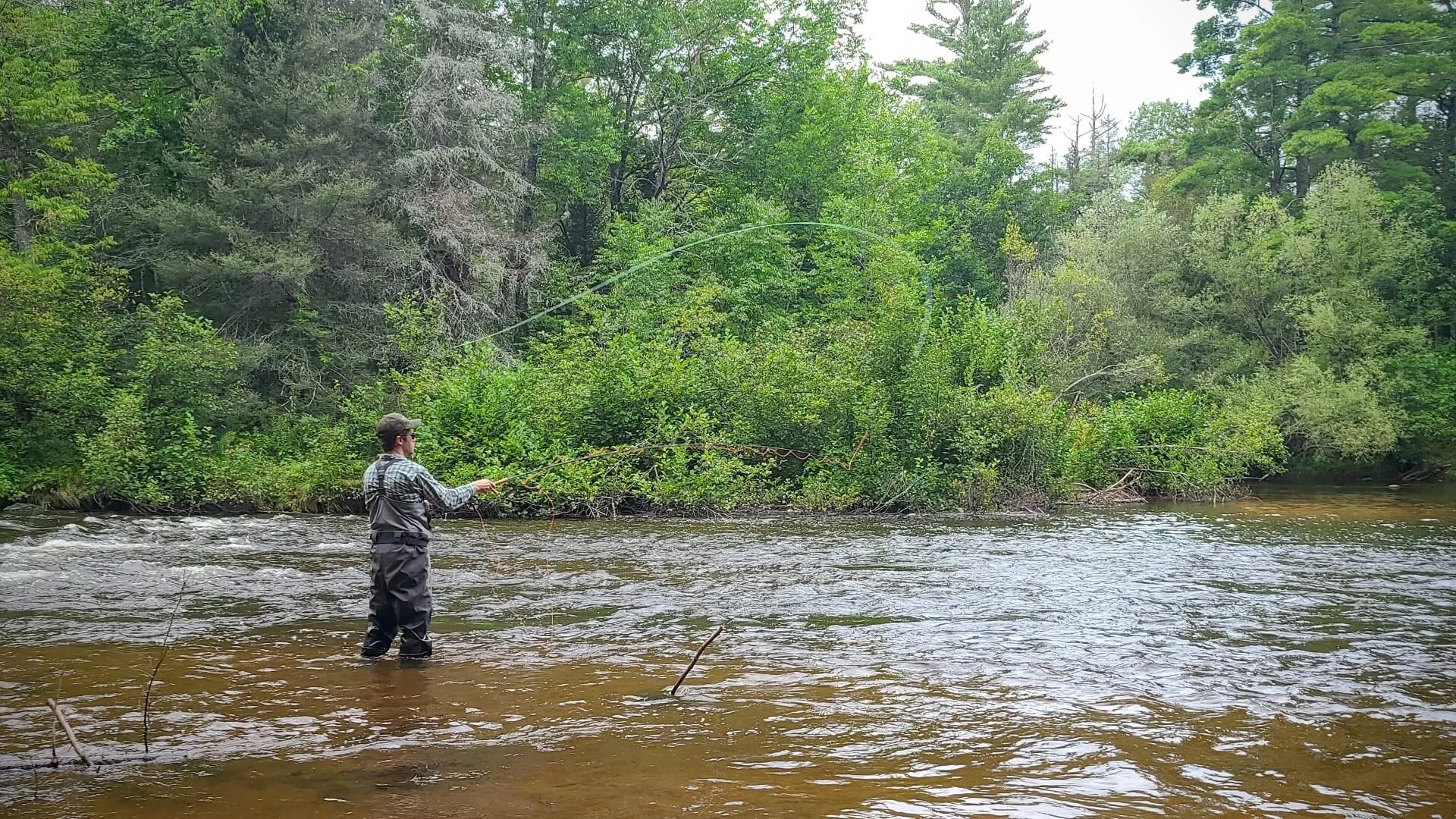
![How To Tie An Intruder [video]](/images/how-to-tie-an-intruder.jpg)
![Steelhead In The Snow [video]](/images/steelhead-in-the-snow.jpg)
